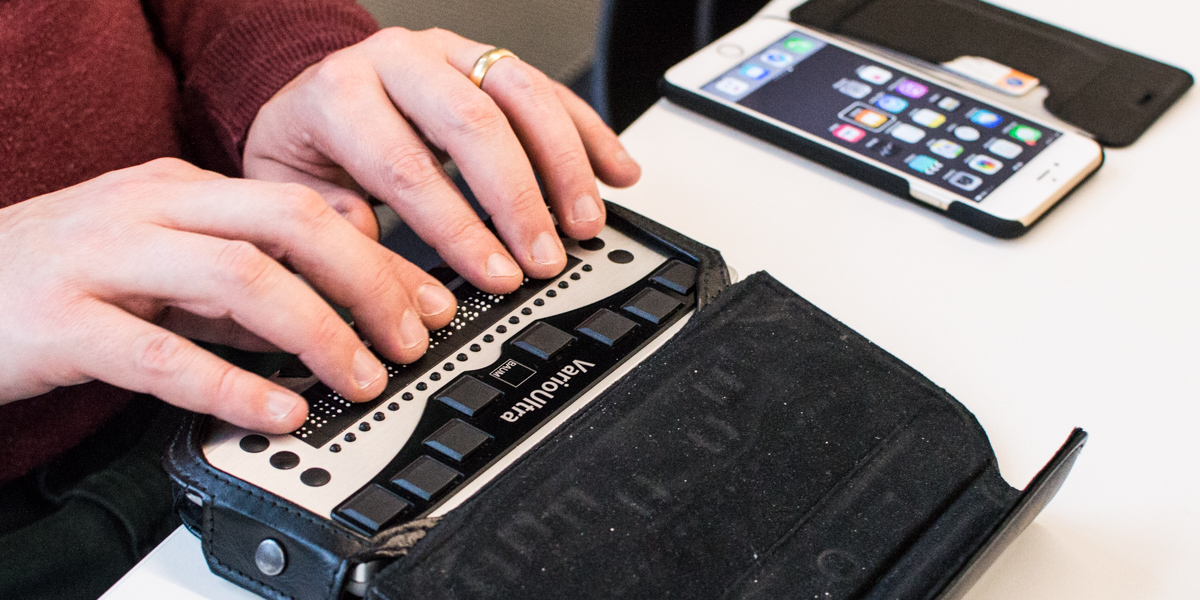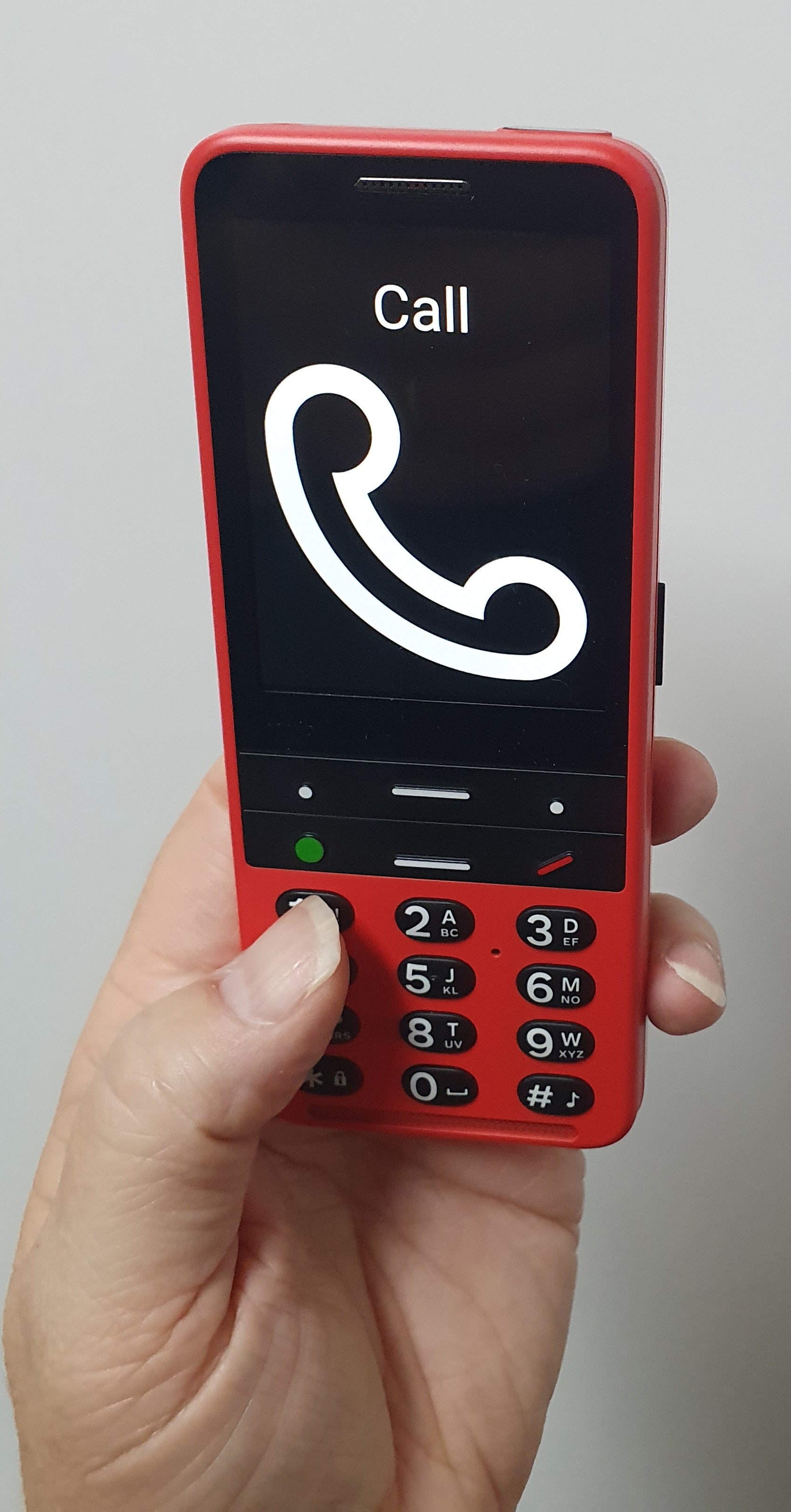Empowering Freedom With Assistive Modern Technology for the Blind
The assimilation of assistive modern technology into the lives of individuals with aesthetic disabilities stands for a substantial improvement in promoting independence and self-sufficiency. From innovative display viewers to innovative smart walking canes, these devices not just improve everyday navigation and interaction but additionally encourage individuals to engage meaningfully in numerous elements of life. As we explore the myriad advantages and real-world applications of these technologies, it comes to be vital to analyze the hidden aspects that add to their performance and the potential for future developments in this essential area.
Review of Assistive Innovation

The growth of assistive technology is based in concepts of inclusivity and empowerment. Developments in software, equipment, and sensory improvements give customers with choices tailored to their certain demands. From screen viewers that transform message to speech, to tactile tools that share information with touch, these tools change the method individuals engage with their environments.
Along with functional applications, assistive modern technology fosters greater social addition and involvement in various markets, consisting of education and learning and employment (Smart glasses for the visually impaired). As research study and advancement remain to evolve, the capacity for assistive innovation to further boost the lives of visually damaged people remains encouraging, paving the means for an extra equitable culture where every person can grow
Sorts Of Assistive Instruments
A selection of assistive gadgets have actually emerged to support individuals with visual problems, each developed to fulfill particular needs and boost daily functioning. These gadgets range from low-tech remedies to state-of-the-art developments, giving diverse choices for individuals.
Low-tech devices consist of magnifiers and large-print products that assist in analysis and writing. Braille devices, such as Braille slates and styluses, allow tactile reading and interaction. Orientation and movement help, like white walking canes, assist users browse their environment securely.
On the greater end of the range, digital zoom systems and display visitors provide significant support. Digital magnifiers enable customers to increase the size of text and photos on displays, while display readers convert digital web content into manufactured speech, helping with accessibility to details on computers and smart devices.
Mobile phone applications also play a vital role, offering attributes like message acknowledgment and navigation support. Wearable modern technology, such as wise glasses equipped with enhanced reality, is arising as an appealing device to improve situational awareness.
Advantages of Assistive Innovation
The assimilation of assistive technology dramatically enhances the top quality of life for individuals with aesthetic impairments. These modern technologies encourage users by advertising independence, allowing them to browse their environments better and carry out everyday jobs with better ease. Screen viewers and magnifying software application allow people to access digital info, cultivating specialist and educational chances that might have previously been out of reach.
In addition, assistive gadgets such as smart walking canes and general practitioners applications give real-time navigation assistance, boosting movement and security. This boosted freedom not only boosts self-worth however likewise encourages social interaction, enabling individuals to get involved more fully in their areas.
Assistive innovation likewise promotes communication, aiding customers connect with others through voice acknowledgment and text-to-speech applications. This ability is vital for maintaining connections and accessing critical details.
Furthermore, the modification alternatives offered with lots of assistive technologies ensure that individuals can tailor devices to their specific requirements, even more improving usability and performance. Overall, the advantages of assistive modern technology for individuals with aesthetic disabilities are extensive, promoting a more inclusive culture where every person can pursue their goals and desires.
Case Studies and Success Stories
Highlighting the transformative influence of assistive modern technology, various instance studies illustrate how individuals with visual impairments have actually effectively incorporated these devices into their lives. One compelling example involves an university pupil that made use of screen analysis software to browse on-line resources and scholastic products effectively. This modern technology not just promoted her education and learning but additionally enhanced her self-confidence in joining discussions and group jobs.
Another study includes an expert that utilizes a mobile phone application made for navigating and item acknowledgment. By utilizing this app, he has regained autonomy in both his personal and workplace, allowing him to commute individually and involve with coworkers a lot more efficiently.
Additionally, a senior citizen shared her experience with braille e-readers, which enabled her to access site web a large variety of literature and stay attached with her neighborhood via book clubs.
These success tales highlight the important duty of assistive innovation in fostering self-reliance, boosting quality of life, and advertising social assimilation for people with visual disabilities (Wearable technology for low vision). By welcoming view it these innovative tools, customers can get over obstacles and seize chances that contribute to their individual and professional gratification

Future Fads in Assistive Modern Technology
Technology in assistive technology is poised to redefine the landscape of support for individuals with aesthetic impairments. Emerging fads stress the integration of man-made knowledge (AI) and device knowing, which enhance the performance of gadgets that help with navigating and info ease of access. AI-driven applications are now qualified of translating visual information in real-time, allowing individuals to involve with their environment a lot more individually.
In addition, the development of wearable modern technology is advancing quickly. Smart glasses furnished with increased fact (AR) can give audio summaries of environments, transforming how customers connect with public spaces. These gadgets not only promote freedom but also foster social inclusion.
Furthermore, the Internet of Points (IoT) is making homes smarter, enabling smooth connection between assistive devices and day-to-day appliances. This connection encourages individuals by enabling voice-activated controls and computerized actions customized to specific needs.
Final Thought
In final thought, assistive innovation plays a critical role in encouraging people with visual impairments by improving their self-reliance and involvement with their environments. The diverse series of applications and gadgets available not only promotes navigation and communication useful source however also promotes social combination and opportunities for individual and professional development. As innovations proceed in this field, the possibility for boosting the lifestyle for those with aesthetic disabilities will certainly broaden, fostering greater autonomy and empowerment.

Comments on “Speech-to-Text Devices for Low Vision: Bridging the Communication Gap”